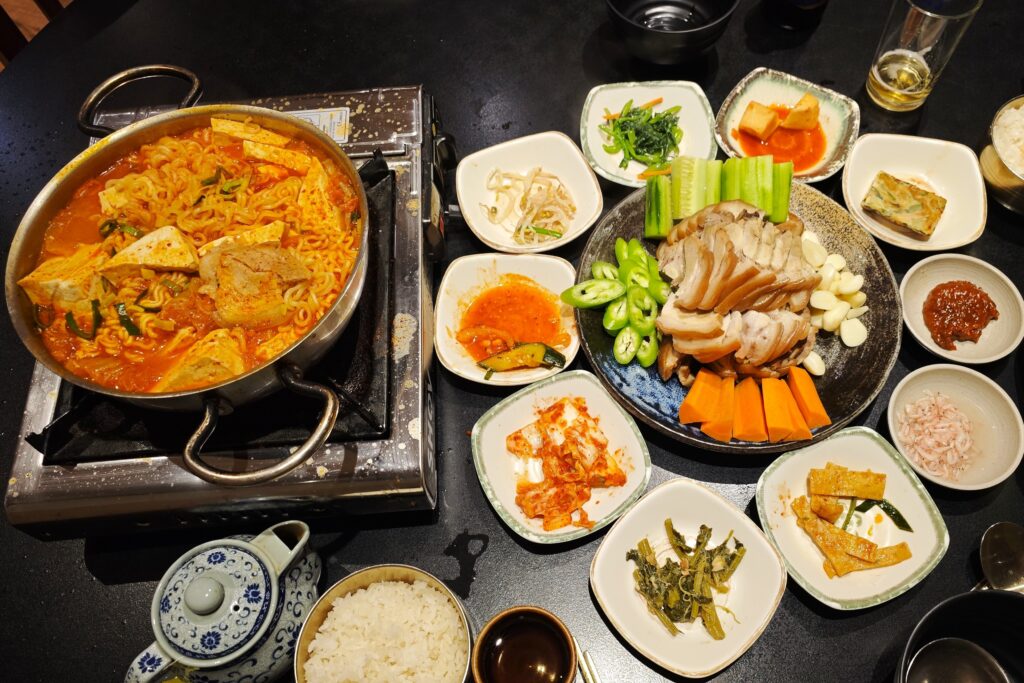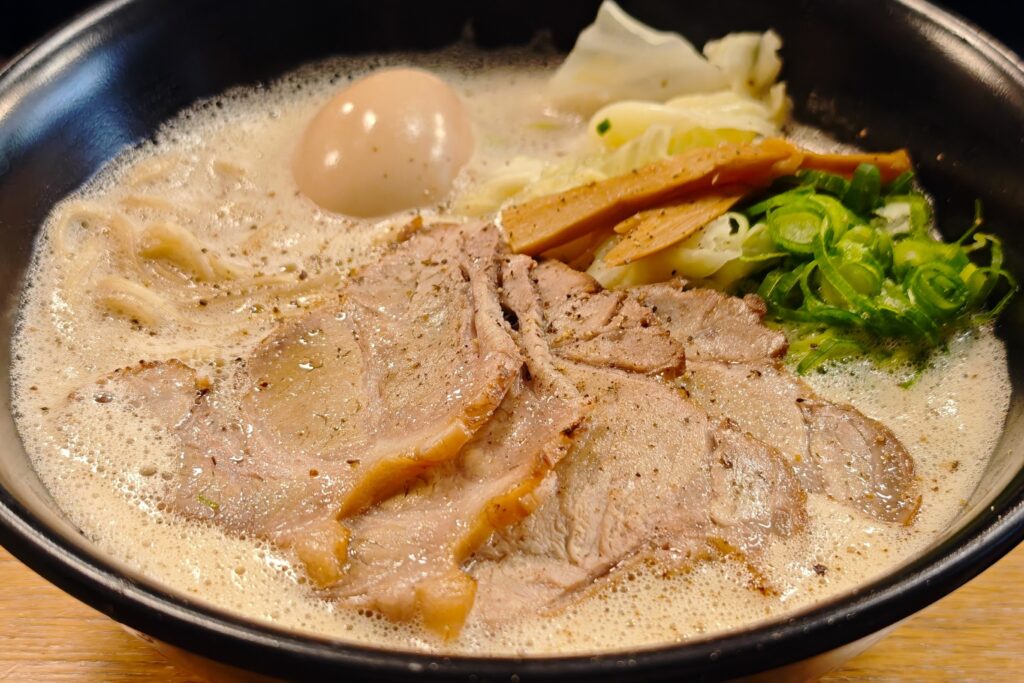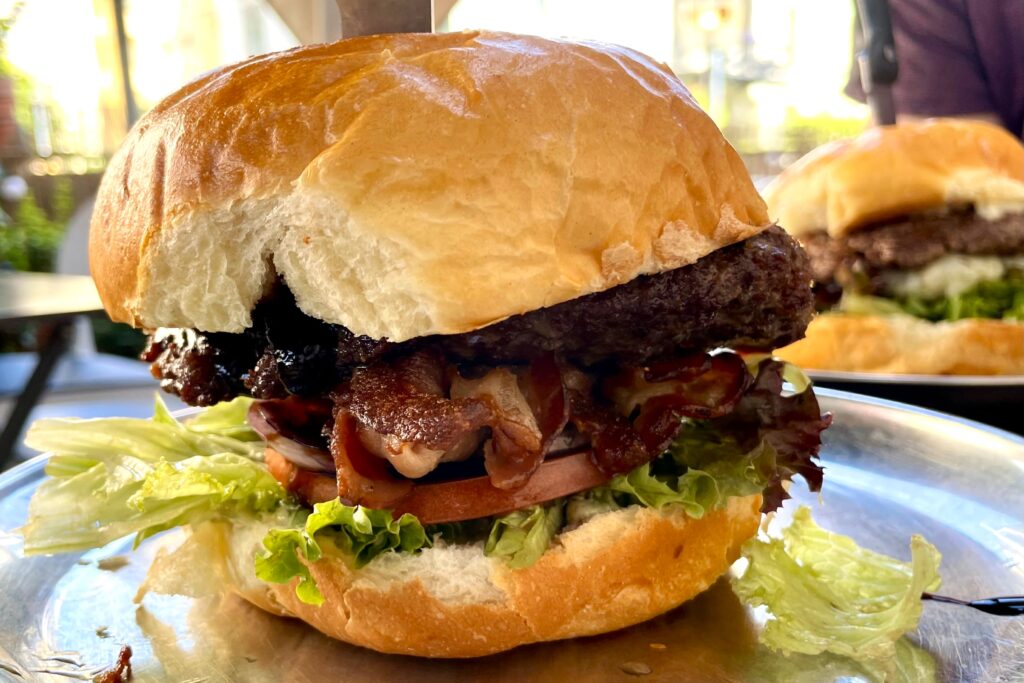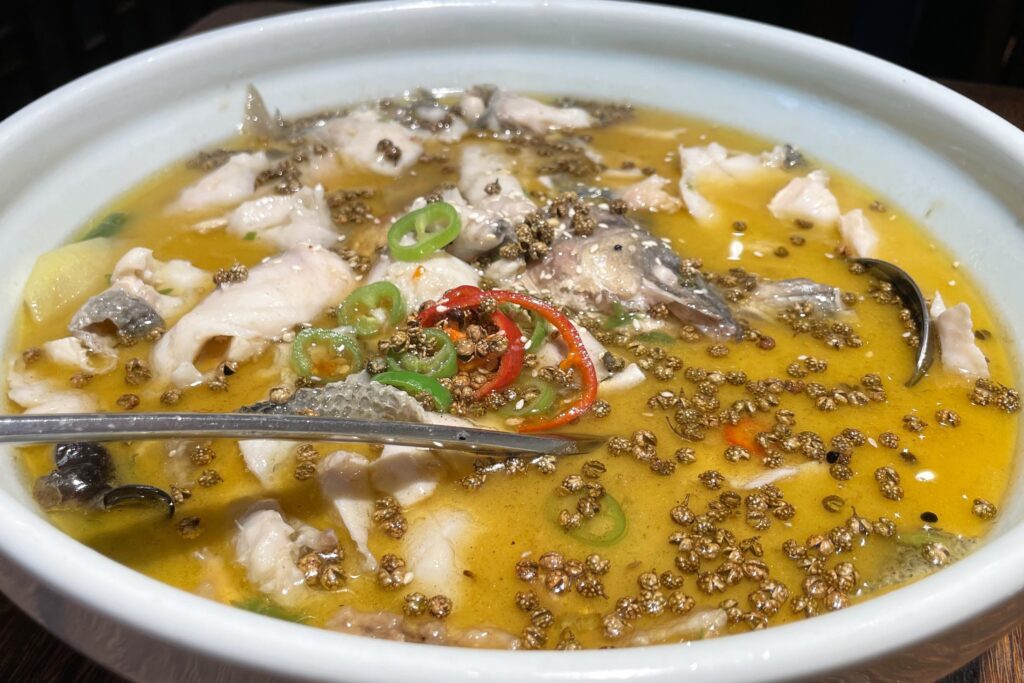It’s been such a delight to stumble upon this Korean restaurant – Mr. Lee – a discovery that makes me wish I had found it sooner. Hidden behind an unassuming exterior, this spot has been serving some of the most iconic Korean dishes for years. Many of these dishes, which I’ve been longing to try, are not easy to find in Frankfurt, due to the meticulous sourcing of ingredients and the labor-intensive techniques involved.
Restaurant Profile
- Name of the Restaurant: Mr. Lee
- Adress: Gutleutstraße 153, 60327 Frankfurt am Main
- Style: Korean Cuisine – street food snack, grill, stir-fry, soup, noodle, rice dish, hotpot
- Price: around 25 – 45 EUR per Person (incl. drinks and tips)
The restaurant’s décor is simple yet inviting, with an understated charm that makes you feel at ease. There are cozy four-person tables for small groups and a spacious round table that seats 7–8 for larger gatherings. One of the walls is adorned with traditional hanok-style wooden windows, adding an authentic Korean touch.
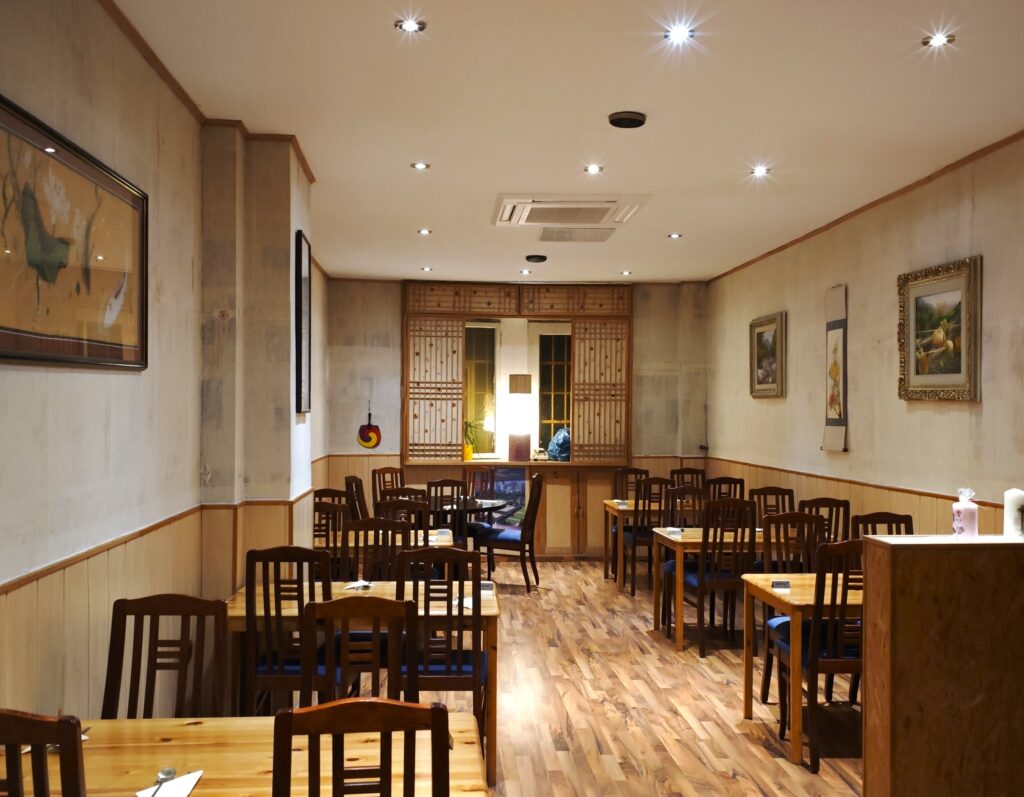
Before we get into the food, it’s worth highlighting that Mr. Lee offers a range of soothing Korean teas, all at an affordable price of just 2–3 EUR per pot. They include:
- Maisseide Tea (Corn Tea): A lightly toasted, nutty brew with a subtle sweetness,
- Gersten Tea (Barley Tea): Roasty, earthy, and caffeine-free, with a smooth, smoky flavor,
- Yulmu Tea (Job’s Tears Tea): Creamy, slightly sweet, and heaty,
- Dungule Cha (Solomon’s Seal Tea): Mildly nutty with a hint of sweetness and a velvety texture,
- Buchweizen Tea (Buckwheat Tea): Crisp, toasty, with a light, nutty aroma.
These teas are believed to have health-boosting benefits and go really well with Korean cuisine!
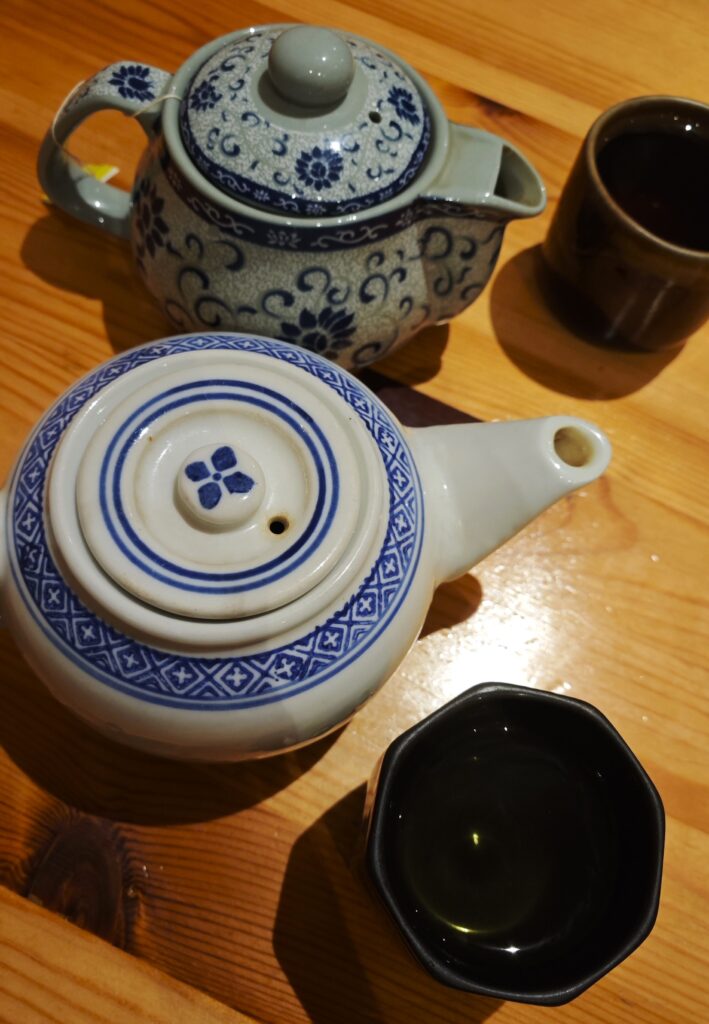
In Korean dining, small side dishes, known as banchan (반찬), are an integral part of the experience. At Mr. Lee, these accompaniments include sour and spicy cucumbers, crunchy spring sprouts, and, of course, kimchi—the bold and iconic fermented cabbage that embodies Korean flavors. There’s also a fermented green with a rich, savory note, along with tofu that is slightly starchy, sweet, and spicy. Fresh spinach brings a mild, clean taste, while crisp pickled radish gives a sweet and tangy crunch. Finally, a few small pieces of savory mini pancakes (jeon) provide a comforting bite.
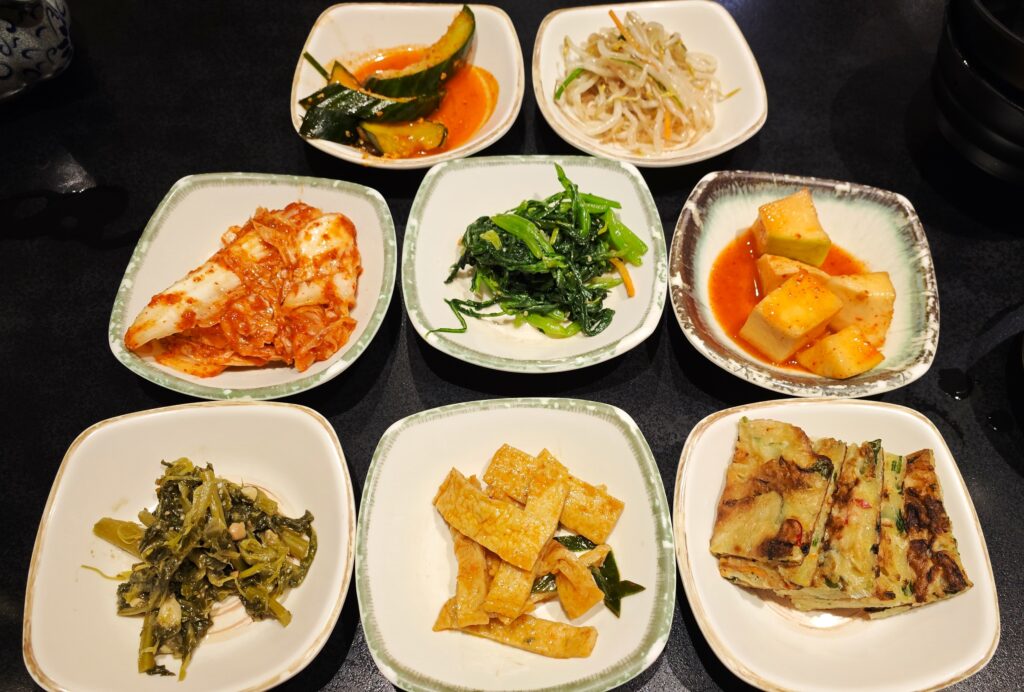
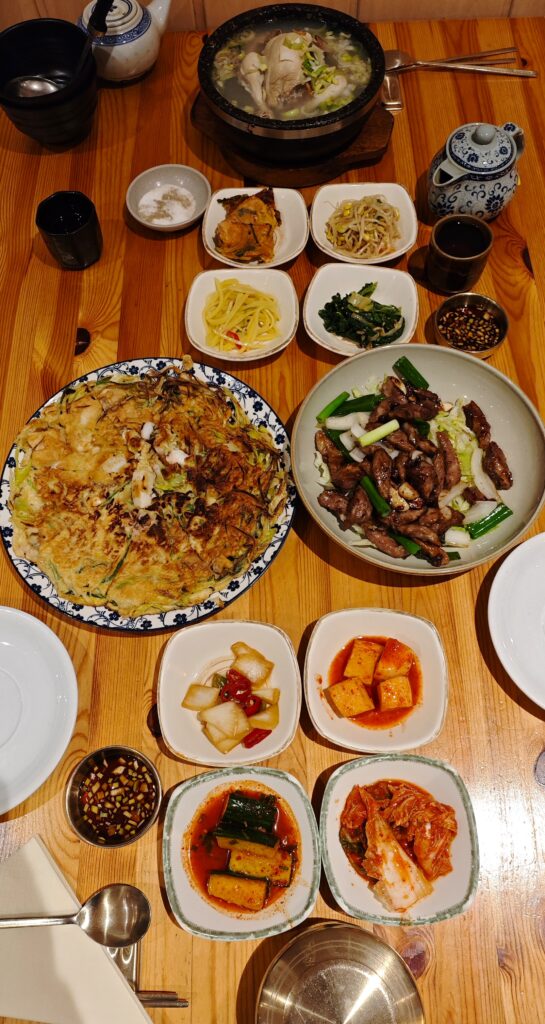
These side dishes are a hallmark of Korean meals, meant to be shared and enjoyed alongside the main courses. They not only enhance the flavors, but also offer a glimpse into the diversity of Korean cooking, making every meal feel abundant and satisfying.
The first dish we want to recommend at Mr. Lee is a classic Korean comfort food – Haemul Pajeon, a savory pancake brimming with seafood and leeks.

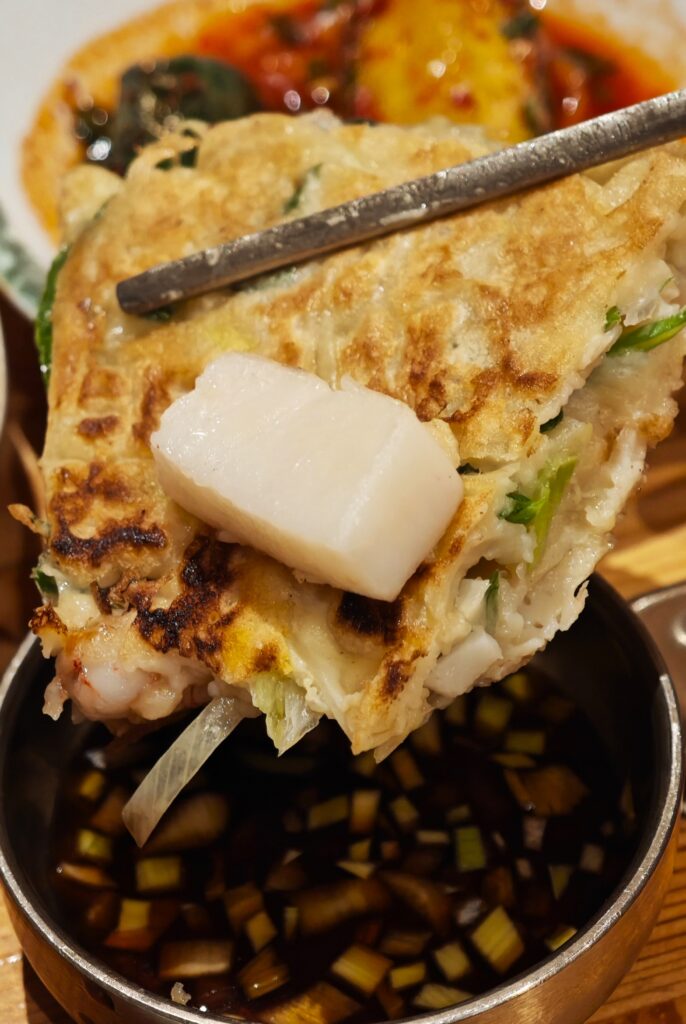
The pancake arrives at the table thick, golden brown, and very fluffy, with a slightly charred surface that adds a smoky depth. Inside, you’ll find an abundance of seafood—plump shrimp, tender octopus, and generous chunks of meaty squid—all mixed with fragrant green onions and mildly sweet leeks.
This dish is paired with a traditional dipping sauce choganjang, dotted with thinly sliced scallions. Made from soy sauce, vinegar, and a touch of sesame oil, this sauce lends tangy, savory, and slightly nutty note to the seafood pancake and enhances its rich, briny flavors.
In Korea, pajeon is often associated with rainy days, as the sound of it sizzling on the pan is said to resemble the patter of rain. And indeed, it’s the kind of food that feels like a warm comforting hug you can enjoy on a drizzly day.
For anyone craving for a piece of Korean barbecue experience, Anchangsal is a must-try. This Korean-style grilled beef dish uses flavorful skirt steak, a prized cut for its natural marbling and robust flavor.

In Korean barbecue culture, dishes like Anchangsal are usually cooked tableside, and enjoyed wrapped in lettuce with garlic and ssamjang sauce.
At Mr Lee, the grilled beef is sliced into bite-sized pieces, and served ready to eat. The meat arrives glistening with an appetizing sheen of oil, its edges slightly charred to deepen its smoky aroma. Each slice, with an impeccable mix of lean meat and luscious fat, is both juicy and gratifying. It tastes slightly sweet, savory and a bit smoky, with just the right indulgence from the marbled fat.
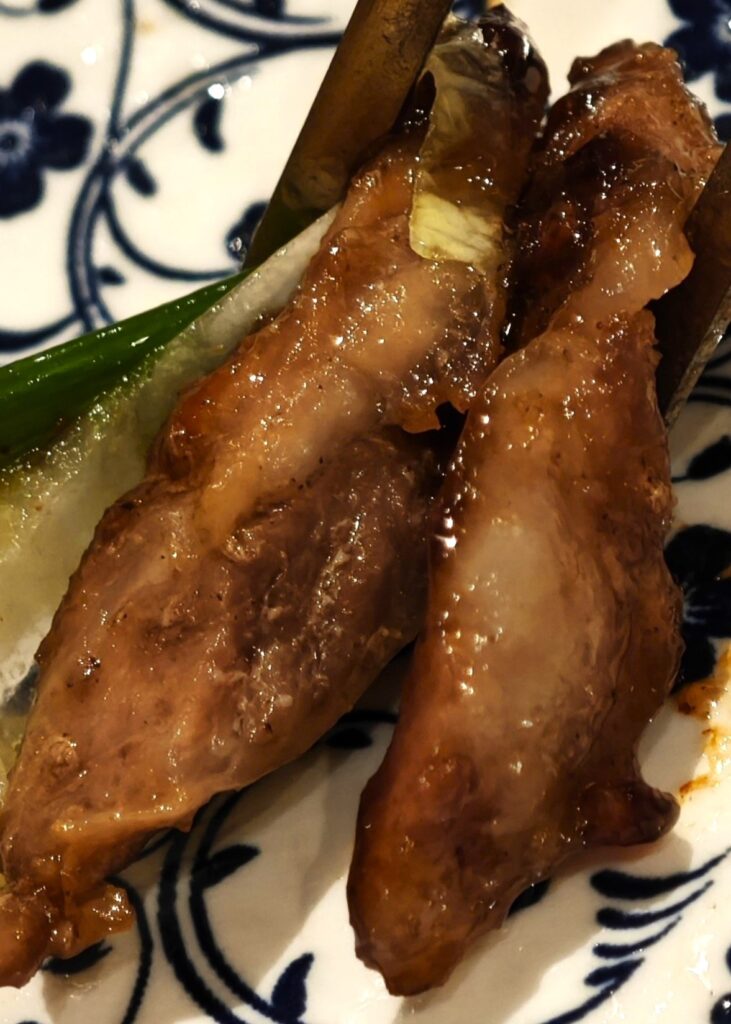
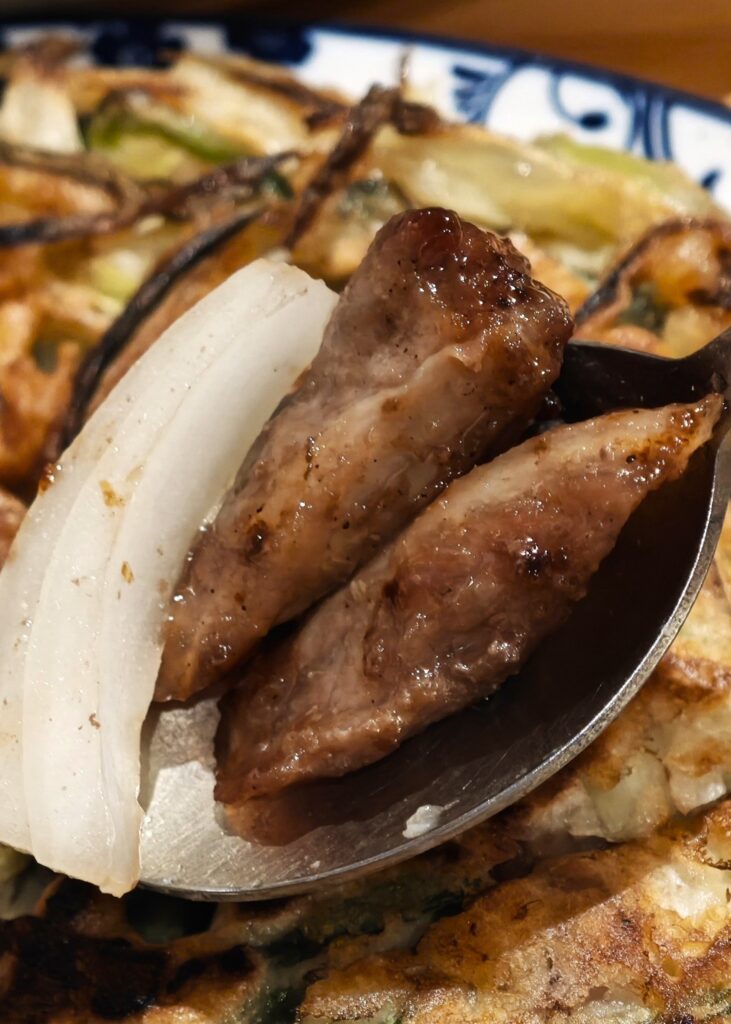
The blend of onions, leeks, and garlic makes it even more enticing. Grilled alongside the meat, these vegetables soak up the juices and caramelize, adding a subtle sweetness and aromatic pungency to the beef’s bold flavor.
Samgaetang, or Korean ginseng chicken soup, is the ultimate comfort food I’ve been searching for—and finally found! This delicacy features a whole young chicken stuffed with glutinous rice, ginseng, garlic, and jujubes (red dates), then slow-cooked until the meat is so impossibly tender that it falls apart at the slightest touch of your chopsticks.

The nourishing broth – infused with the chicken flavor – is mild, pure and unadulterated, with no strong saltiness; instead, a small dish of salt and pepper is served on the side, so you can season the soup and chicken to your liking.
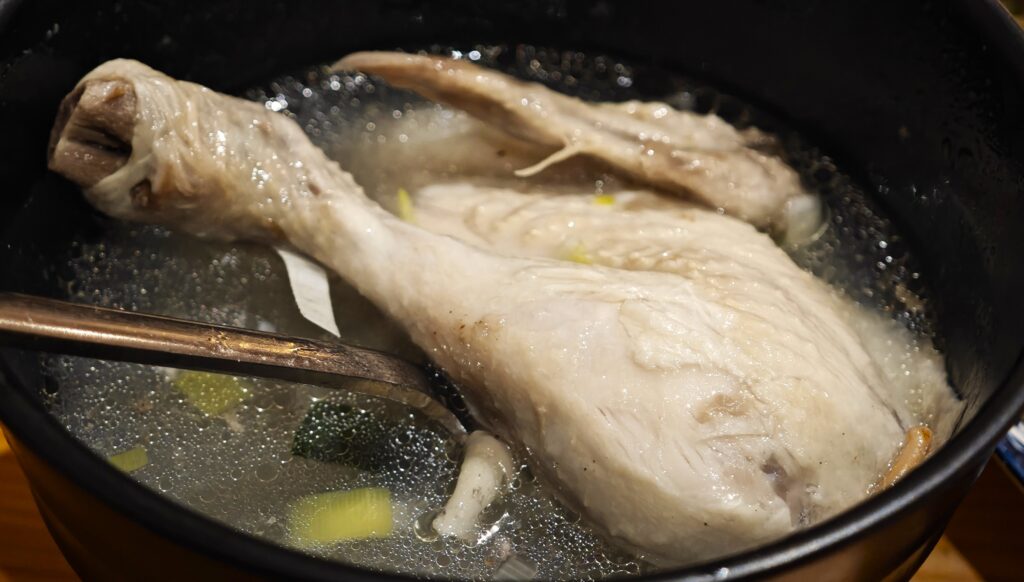
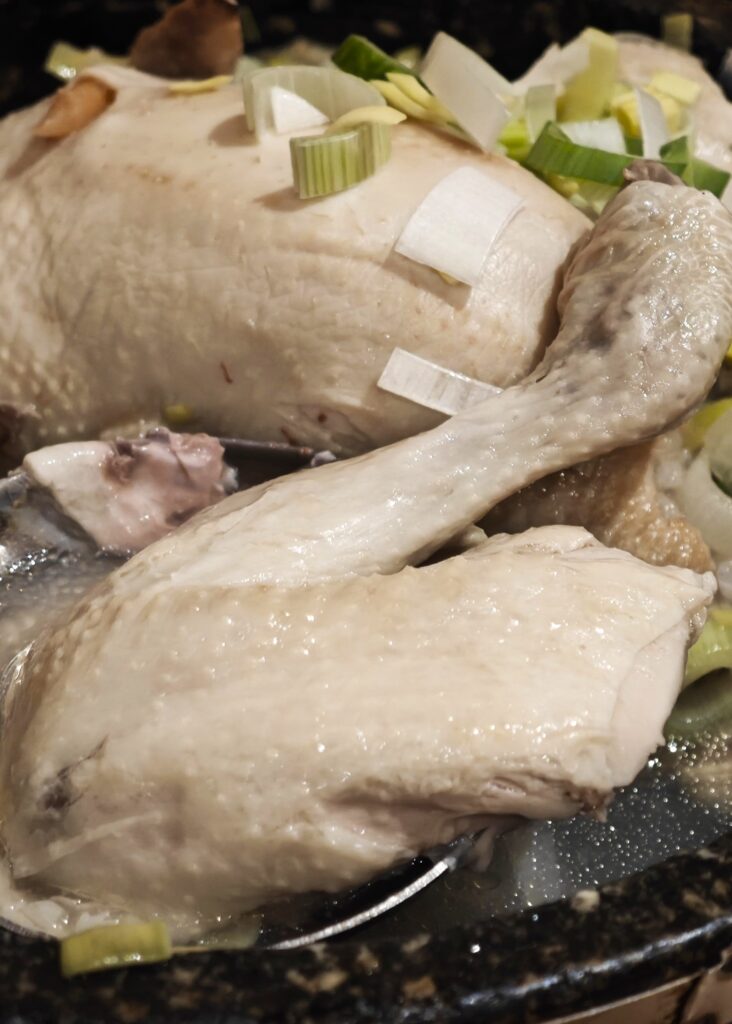
Start by savoring a spoonful of the unseasoned broth, enjoying its clarity and depth. Then, tear the chicken into bite-sized pieces, dip them lightly in the salt mixture, or enjoy them alongside tangy kimchi. Inside the chicken, you’ll find glutinous rice soaked in the broth, soft, sweet jujubes dates, and ginseng – a revered root in traditional Chinese medicine, renowned for its adaptogenic properties that help the body cope with stress and boost overall vitality.
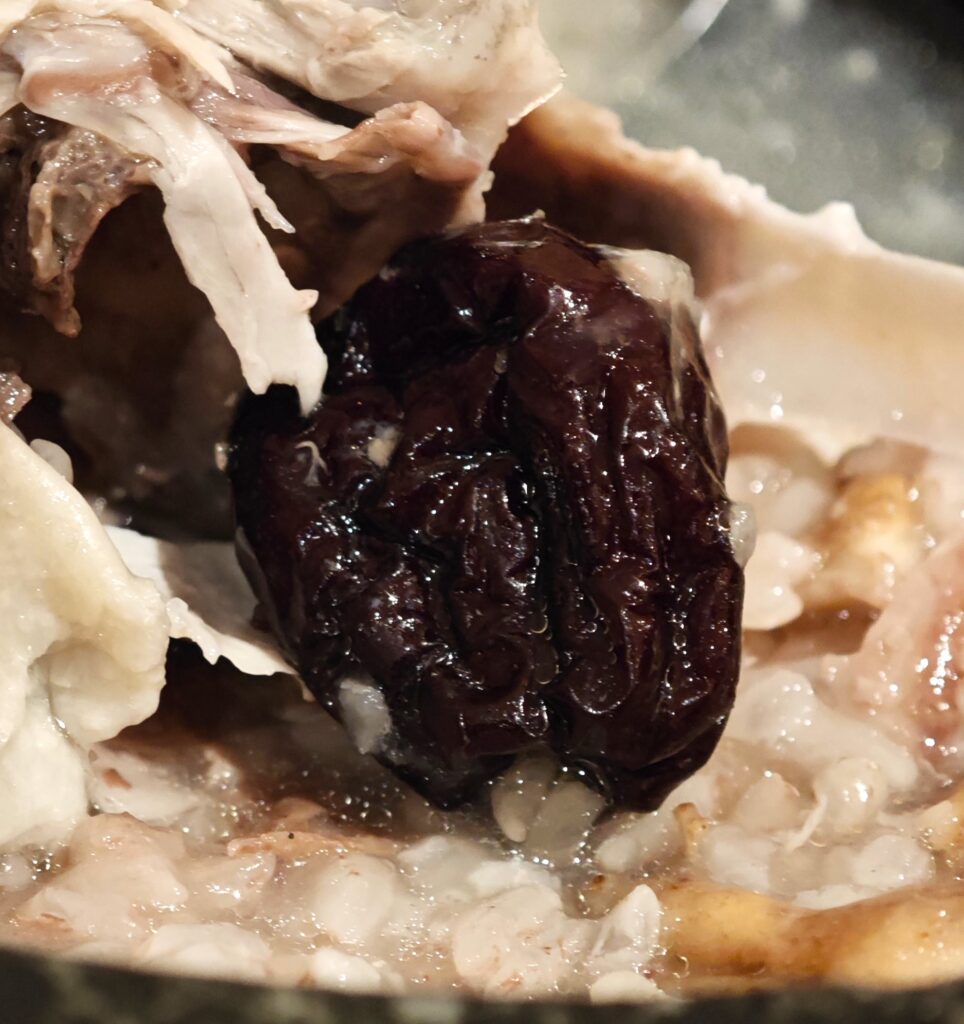
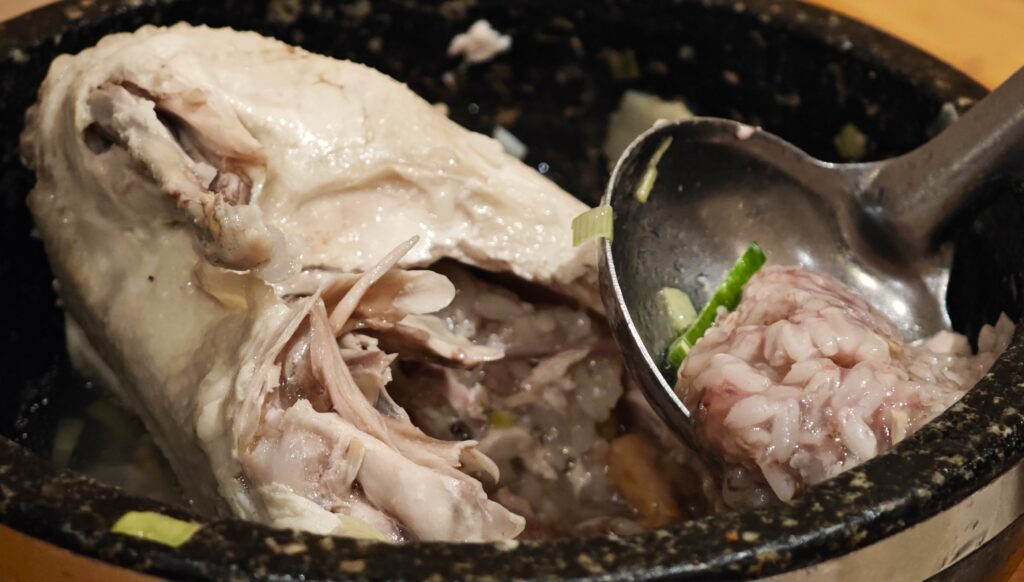
In Korean, Samgaetang is like restorative remedy, popular all year round. In summer during Chobok (the start of the hottest days), it’s believed that eating hot and nutritious food replenishes your energy and balances the body during extreme heat. It’s equally beloved in winter, offering warmth and comfort in the coldest months.
At Mr. Lee, for its meticulous preparation, this dish requires a reservation at least three days in advance. But it’s absolutely worth the wait!
Jokbal, Korea’s answer to German’s signature pork knuckle dish (Haxenfleisch), surprises with its balance of richness and lightness. The pork knuckle is simmered for hours in a seasoned broth of soy sauce, garlic, ginger, and spices, making the meat incredibly tender and delicious. The lean parts are slightly chewy, while the fatty parts are soft and rich—but not greasy. Thanks to the slow-cooking, excess fat is rendered out, leaving behind a supreme succulence and a clean, mild taste.
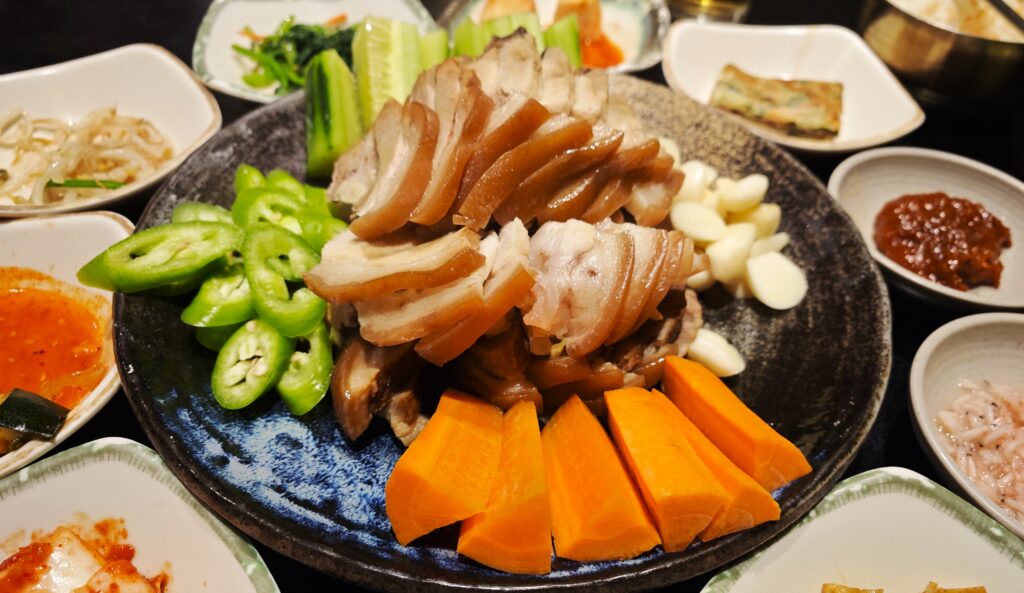
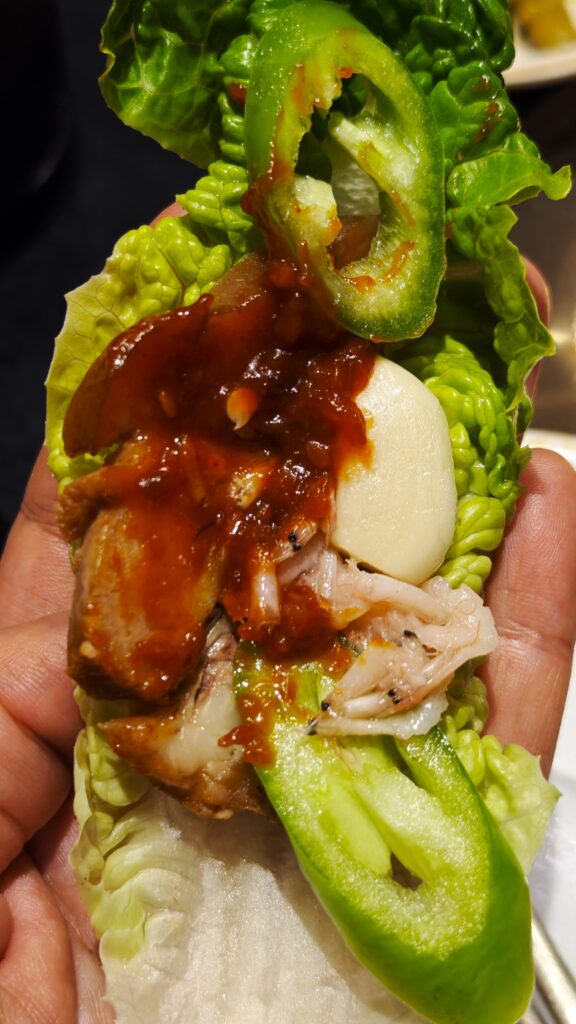
The pork is paired with ssamjang (쌈장) sauce, made from soy sauce and fermented beans and subtly spiced with chili. There’s also saeujeot— a savory Korean shrimp sauce that complements the mild pork meat. Fresh accompaniments like crisp cucumber, carrots, long green peppers, crunchy lettuce leaves, and raw garlic bring brightness and pungency to the bite.
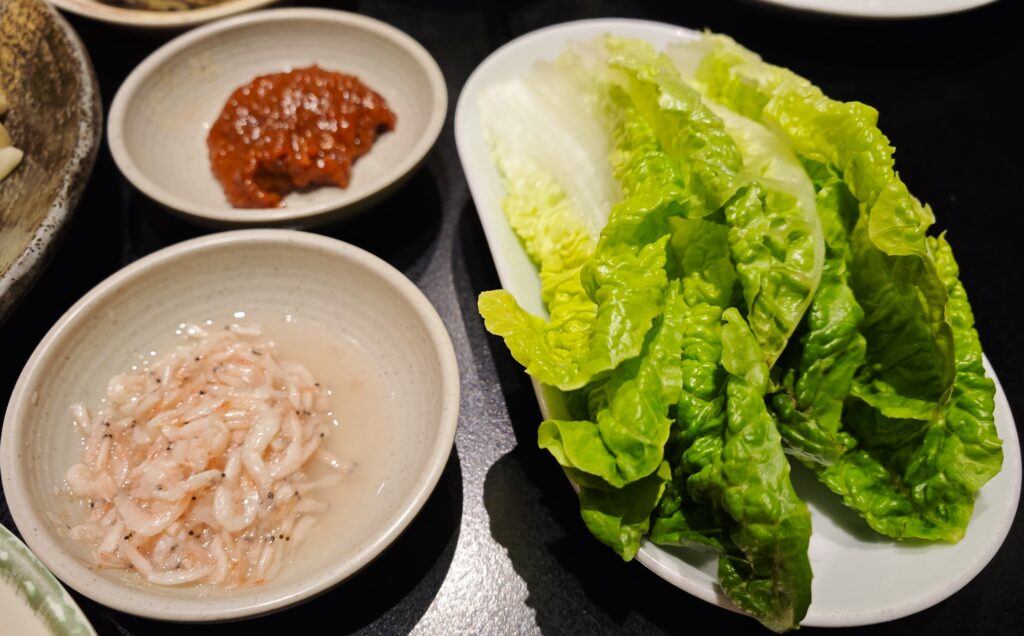
Wrap a slice ofpork in a lettuce leaf, pile on the fresh vegetables, add garlic for boldness, and finish with a drizzle of savory sauce – it’s an explosion of flavors in one bite.

Beyond its deliciousness, its collagen-rich properties are believed to promote smoother, more supple skin—leaving you feeling good inside and out!
Kimchi Jungol is a Korean hotpot that brings together the fermented kimchi with the Korean-style bacon, tofu, ramen, and a medley of spices, all topped with fresh leek for an aromatic burst.
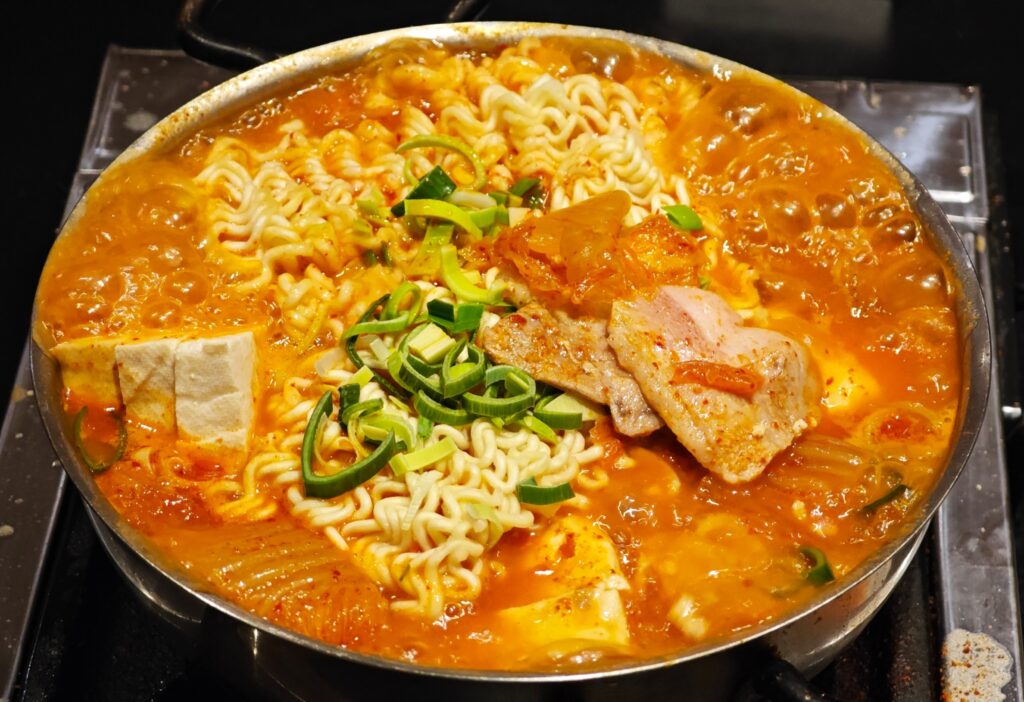
The kimchi’s strong, tangy sourness forms the base of the broth, while the pork belly (or Korean-style bacon) lends a savory depth.
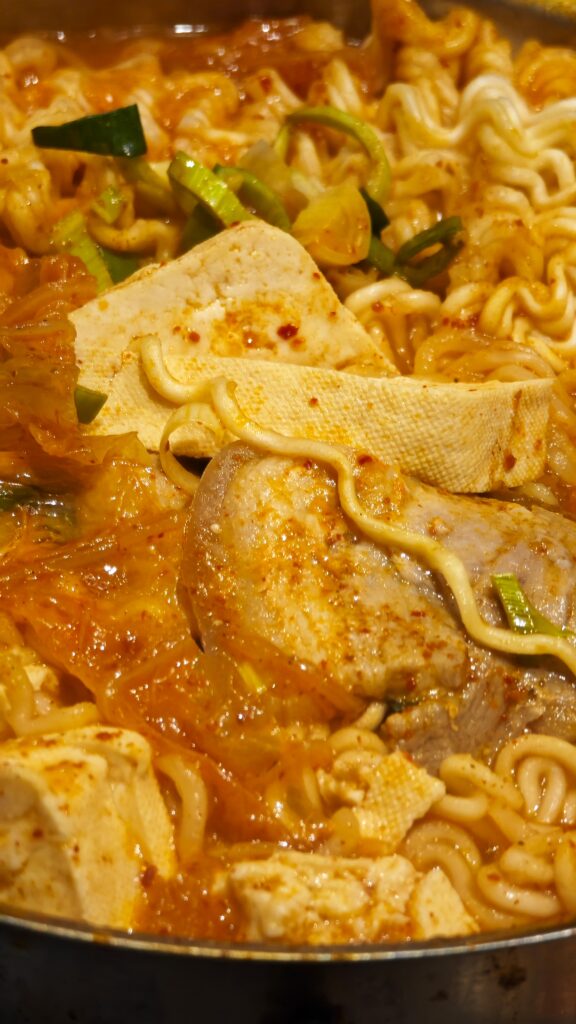
The pork belly, rich, tender and umami-packed, pairs perfectly with bold, fermented kimchi, while the tofu contracts with a soothing softness.
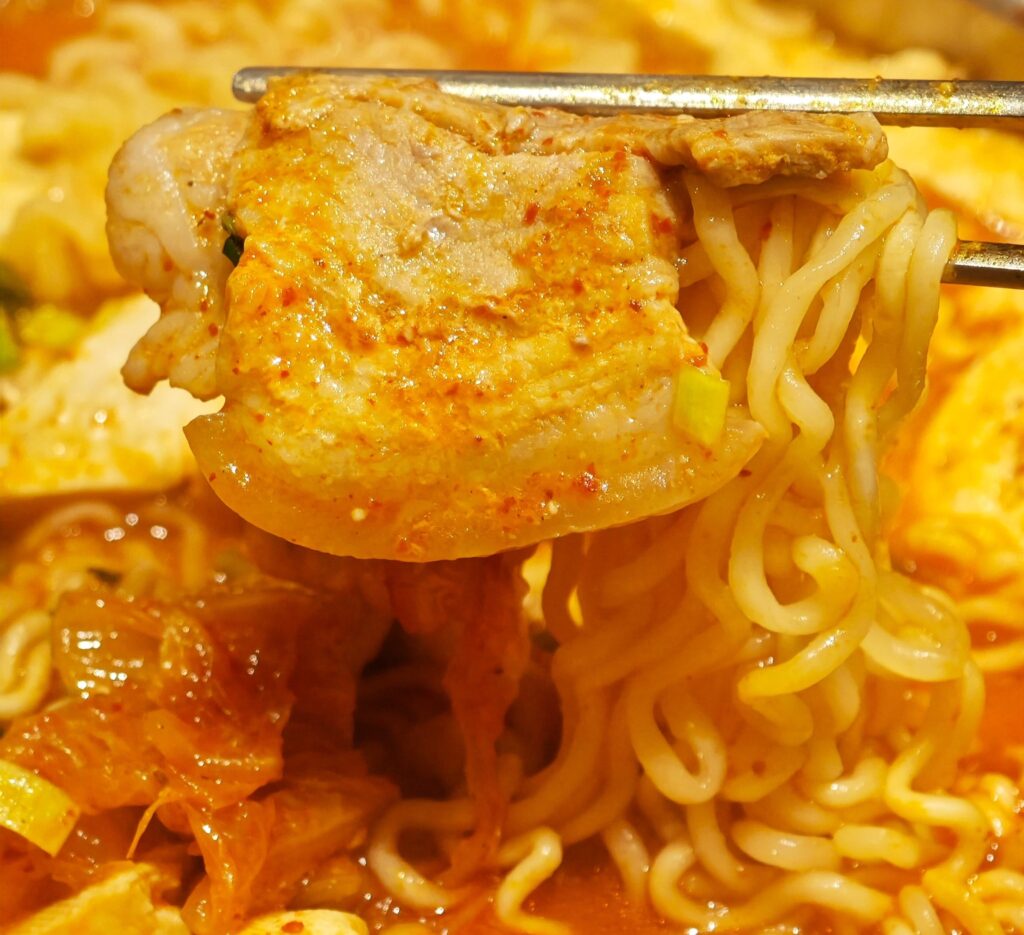
The ramen noodles (Korean instant noodles), a popular staple in Korean stews, bring a bouncy, chewy texture that absorbs the thick, flavorful broth, making each bite super gratifying.
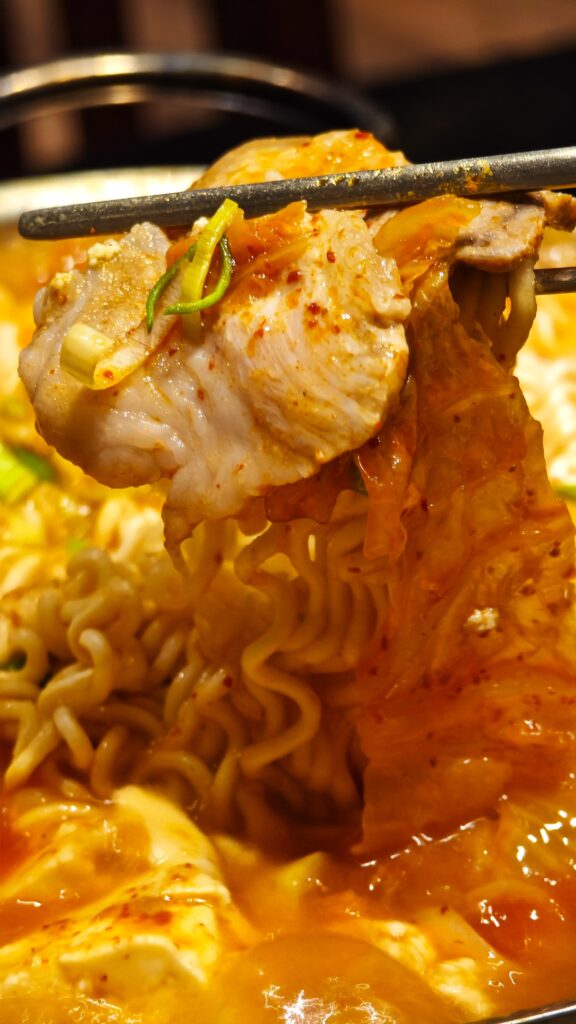
The soup itself has a sour, spicy kick, thickened with a starchiness that gives it a hearty feel. What we like the most about this hotpot is the hint of tomato flavor, which brightens up the dish with a subtle freshness. You’ll find small pieces of tomato mixed in, infusing a mild sweetness.
Once served, it only needs 3-5 minutes to cook the noodles, after which the pot should be turned off. All the ingredients are pre-cooked. If you like bold, complex Korean flavors, this is the dish for you and it’s sure to leave you warm and satisfied.
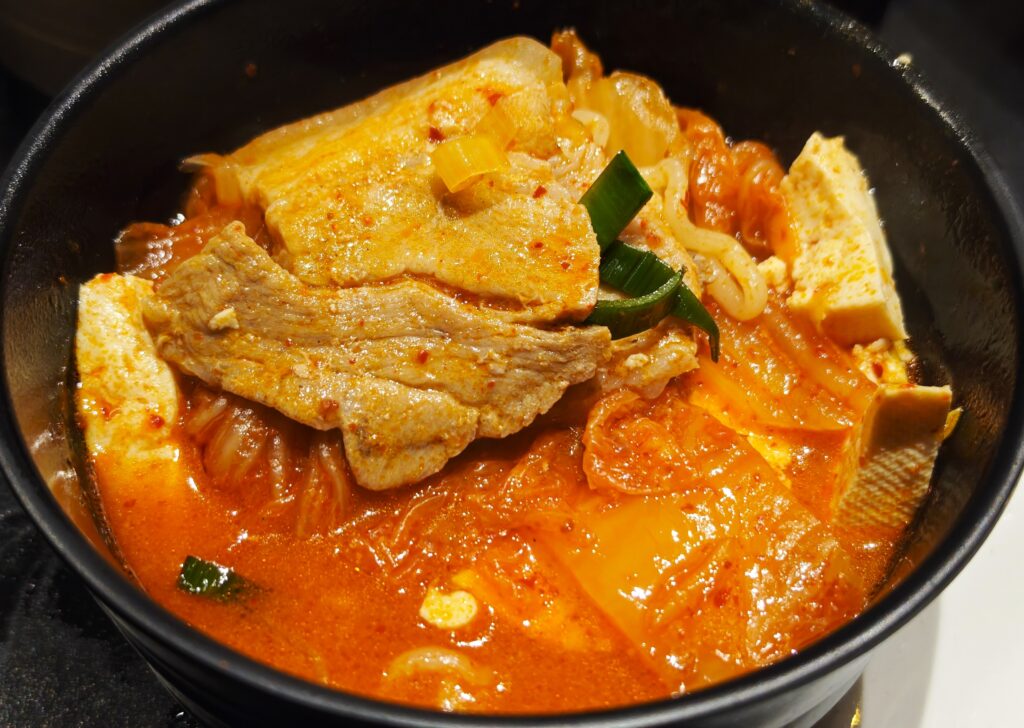
Mr. Lee’s menu is full of dishes that are well worth trying, yet rarely found elsewhere in Frankfurt. As well as classics like Bulgogi, Duk-bok-ki and Mandu, you’ll see light and comforting Kongnamul Haejangguk (beef soup with bean sprouts), fiery and flavorful Agujjim (spicy monkfish with bean sprouts), tender Dogani Muchim (boiled beef marrow with vegetables), and juicy Bossam (Korean bacon paired with oyster and radish kimchi). For hotpot lovers, there’s a vegetarian version with anchovies and tofu.
These dishes effortlessly reflect Koreans’ dedication to fresh ingredients and mastery of cooking techniques. The magic happens when the familiar ingredients transform into something extraordinary—like the tender, nutritious Samgyetang (ginseng chicken soup) or the rich yet refreshing Jokbal (pork knuckle). Some dishes here may be lesser-known, even to avid Korean food fans, but that’s the beauty of it, isn’t it? In life as in food, there is always something new and intriguing waiting to be discovered – some of which may become cherished memories, destined to stay, and leave a lasting imprint on your heart.

